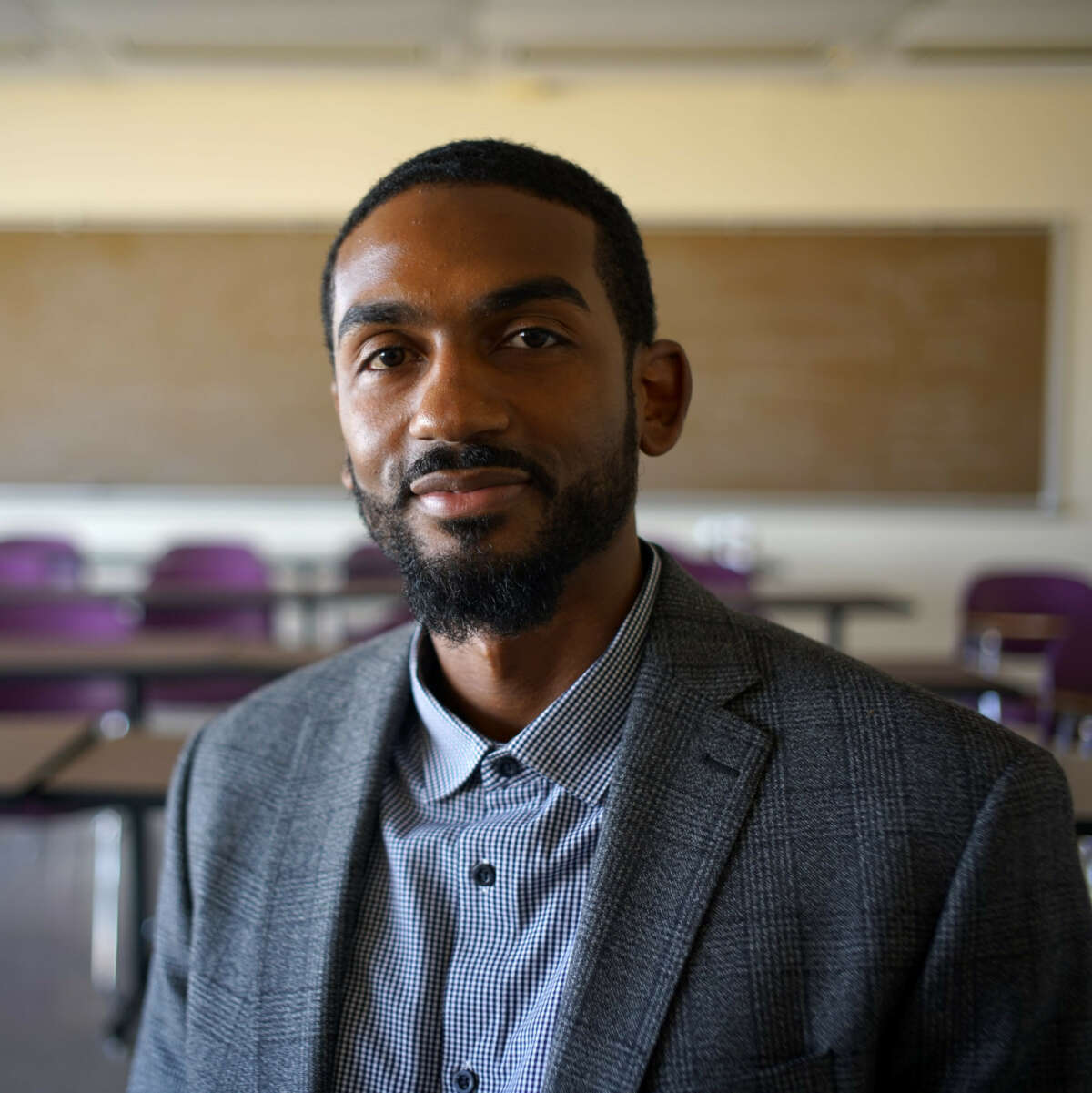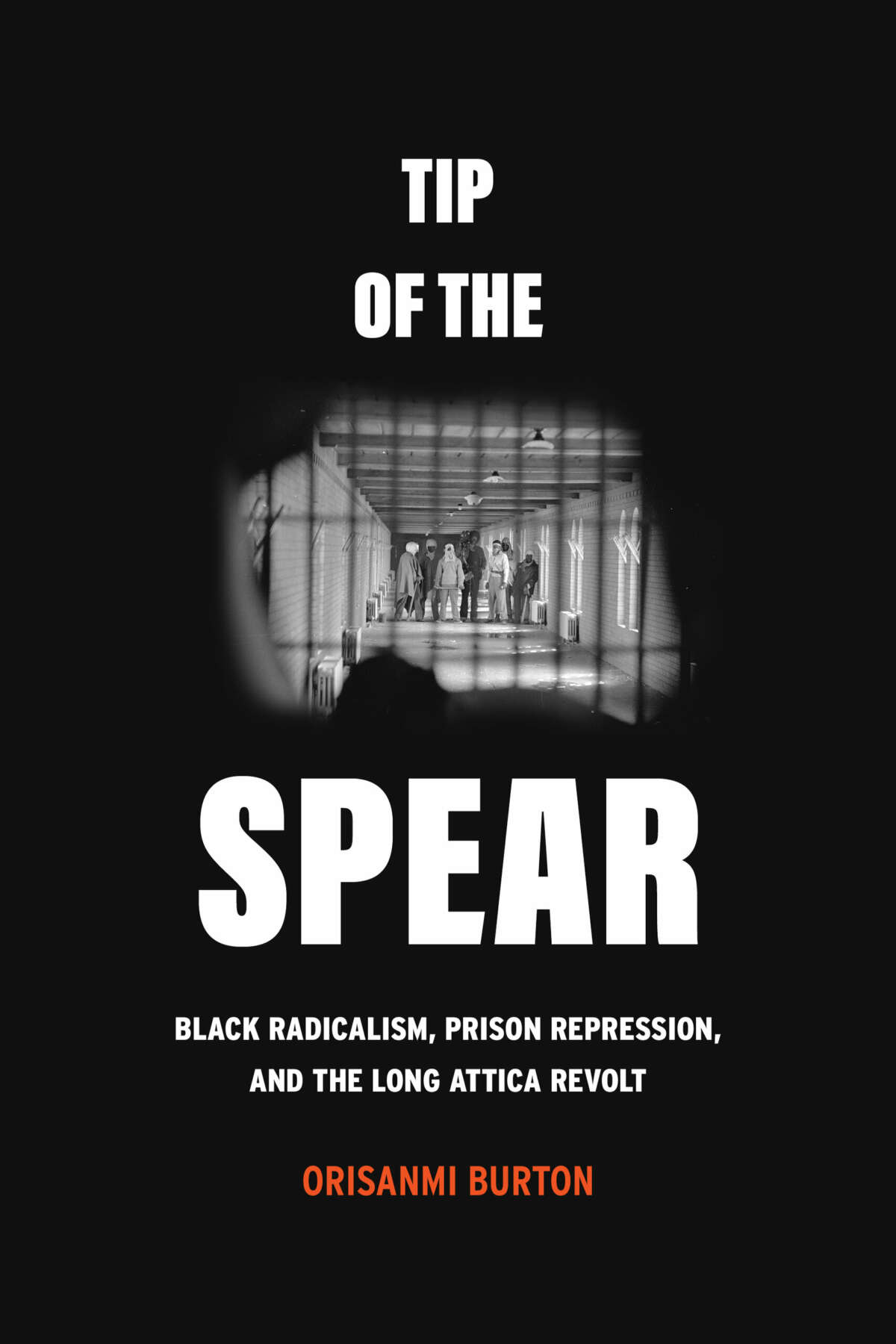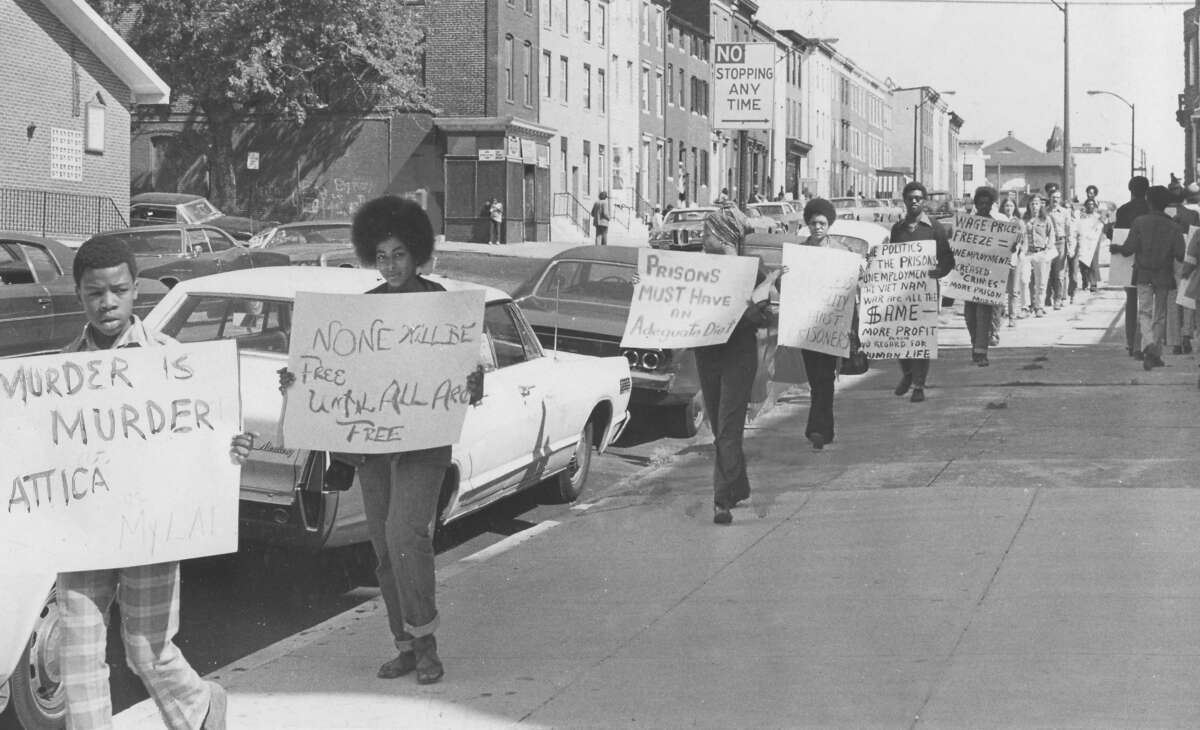The 1971 Attica prison uprising — and subsequent massacre — remains the most famous prison rebellion throughout the world. Lesser known is the prison organizing — and repression — that flourished in prisons in New York state and around the country both before and after the infamous rebellion.
In his new book, Tip of the Spear: Black Radicalism, Prison Repression, and the Long Attica Revolt, Orisanmi Burton chronicles the Black radical organizing in New York’s men’s prisons that preceded Attica as well as the state’s response, which combined reforms as well as violence, isolation and sexual terror. In this exclusive interview for Truthout, Burton discusses his approach to this history and its lessons for prison organizing today.
This interview has been lightly edited for clarity.
Victoria Law: What led you to write Tip of the Spear?
Orisanmi Burton: I was given an intergenerational assignment from Eddie Ellis, an elder of the movement. In 2014, I was interviewing him and he said what would be helpful is if someone could use the tools of academia to elaborate the Black radical analysis of prisons and the prison movement. We developed that analysis, but we’ve never had the opportunity or the resources to document and explain our theory, politics, decisions and mistakes. So that was his assignment to me. I spent several years excavating that history, understanding analysis, and then trying to write it in a way that would be helpful for future generations.
The subtitle of your book is the Long Attica Revolt. Tell me more about that framing.
Attica is one of the most famous prisons in the world because of the rebellion. The dominant understanding is that it unfolded over the course of four and a half days, that it was entirely confined to that single prison, and that the politics of that rebellion were confined to reforming the institution.
Then I began to interview elders of the prison movement. Whenever I would ask about Attica, some would answer the question by talking about the organizing in that prison, but others would talk about events that preceded Attica, but were deeply connected to that rebellion or the events that followed.
The rebellion in Attica was the culmination of a much more protracted period of struggle, or what I call a revolt, that traversed multiple carceral sites, that lasted for at least 13 months and continued after Attica.
Attica is really a shorthand term for a deep genealogy of radical prison struggle. The “long Attica revolt” refers to a struggle that had demands that are oriented toward improving prison conditions, but also a much broader set of radical and revolutionary demands that have to do with the total transformation of society and also acting in solidarity with anti-colonial movements unfolding elsewhere in the world.
“The long Attica revolt” as a framework speaks to a much deeper and more expansive concept of really revolutionary and abolitionist struggle that was unfolding within the prison itself.
So much of what was happening in these prisons was about psychological warfare.
Your book focuses repression and organizing in New York men’s prisons. Why did you decide to focus specifically on men’s prisons? And how does this reflect the documentation about incarcerated women’s organizing at the time?
The book, as I said, started with Eddie Ellis, a man who was incarcerated in men’s prisons. Through Eddie, I got access to many of his comrades and so my network started that way.
I worked on the book over a number of years. [The decision to focus on men’s prisons] had to do with the sheer size and volume of the story that I was telling, and the amount of labor that had to go into documenting that story.
Given that I’m only studying men’s prisons, what I tried to do was bring a gender analysis to the text. I tried to think about how masculinity, manhood and gender violence are operative in this struggle.
I also give a nod to work that’s looking at what’s happening in women’s prisons, including your work, and the work of Sarah Haley, Joy James, and others. But the fact that one would have to make a decision like this speaks to the gendered organization of prisons themselves. People who are incarcerated are subjected to this state-managed gender binary and so the records, documentation and knowledge about what’s happening within these prisons and through them is often segregated in a number of ways, including gender.
What was an instance that you uncovered that made you rethink what you thought you knew about prisons, repression and organizing during that period?
I started the book with a speech by Queen Mother Audley Moore, a co-founder of the Republic of New Afrika and longtime civil rights organizer, who went into Green Haven in 1973. She gave a keynote address where she cited her long history of struggle all the way back to the Garvey movement. She emphasized that Black people as a whole are a colonized population, what she calls a “captive nation,” and that imprisoned Black people are therefore captured in a double sense. This is a profound intervention, because it means that political organizing and struggle within prisons isn’t solely or even primarily about changing prisons. It’s about abolishing the broader relationship of captivity that Black people have to the United States.

I knew I wanted to have that speech in there and ultimately, decided to begin with it because the more I learned, the more I realized just how prescient her comments were.
At this time, the dominant sort of mode of political analysis was anti-colonialism. Black people and other people of color were increasingly thinking about themselves as colonized subjects and were demanding some form of independence or decolonization from the American project.
So much of what was happening in these prisons was about psychological warfare. It was the carceral warfare state, where prison administrators were trying to devise ways of pacifying the population, of making the [incarcerated] population feel like they could not win in a struggle, that they should not struggle, that they should be happy.
Much of what the prison was trying to figure out was how to make incarcerated people, but also all kinds of minoritized populations, content with their status as second-class citizens.
They were developing strategies for pacifying the population, for ensuring the continuance of peace in the absence of justice. How do we make them content? How do we stop them from rebelling?
That’s very much what Queen Mother Moore’s speech was about, though it took me a while to realize just how true that was.
Many people know about the FBI and COINTELPRO, but not many know that FBI Director J. Edgar Hoover also launched the Prison Activists Surveillance Program (PRISACTS), a program of carceral counterintelligence. Tell me more about that.
In one of J. Edgar Hoover’s last public speeches before he died in 1972, he mentions Attica. He talks about how the Attica rebellion represented an unholy alliance between criminals, Black criminals and Black revolutionaries. Then he dies and the FBI comes under new leadership. The reason I’m saying this is because Hoover is cited as a villain by the left. But the Prison Activist Surveillance Program, which is a prison-based successor to COINTELPRO, was launched under the tenure of his successors.
The program was launched during the period in which COINTELPRO was being exposed and it’s not as heavily documented as COINTELPRO. But what is clear is that the FBI were very concerned with Black radicalism in prisons. They developed a liaison program through which the FBI would establish ongoing contacts with key people in prisons throughout the country. They organized a symposium in Quantico, Virginia, at the FBI headquarters called the National Symposium on Prisons as a Revolutionary Target, where they had prison administrators from all over the country, administrators from the Law Enforcement Assistance Administration, from the National Institute of Mental Health, and a few people there from the CIA as well. The symposium was to teach prison administrators and guards the tactics of counterrevolutionary warfare.
This is a key moment that helps to drive home the key thesis of the book, which is that prisons are a domain of war. At this symposium in 1973, here is the moment in which prison administrators were trained to think about their work as a domestic war [and trained by] people who had engaged in counterinsurgency warfare elsewhere throughout the world.
The state is looking at reforms through a counterinsurgency lens. It’s interested in doling out reforms only insofar as they help to counter the possibility of rebellion.
The first memo that I’ve seen from that program was offered a year to the day before George Jackson was assassinated. Now, that might just be a coincidence. But it’s clear that the program itself was responding to George Jackson and to Attica. They were very concerned with how to neutralize this movement and they were explicitly adopting counterinsurgency strategies from elsewhere.
Organizing continues to happen in prisons today and incarcerated organizers continue to face brutal repression. What are the lessons we can draw, knowing that there was specifically a COINTEL-like program targeting prison organizing?
First, the state was very fearful and concerned about the capacity of Black radical organizing. The book shows the lengths that they went to try to contain the struggle. You can look at the existence of PRISACTS in a pessimistic way. But you could also look at it and say, This is how threatening the organizing was.
The state views prisons as reservoirs of radical political potential. The organizing and political education in the ’70s were activating ordinary people to get involved and get organized.

That reservoir still exists today. The only thing that has changed is that the state has developed new techniques to try to prevent political organizing, to prevent political education from seizing hold of the population in the same way.
But I also think this history speaks to the need of organizers to think strategically and tactically and to understand that, when you’re engaged in organization and when you’re trying to politicize this population, you’re going to come up against an opposition that is also organized and an opposition that is specifically thinking about war.
What lessons can we learn from these 1970s movements?
The state used a variety of different techniques to crush the movement, not just violence.
The Attica massacre gets talked about a lot, as it should, because it was horrible. But the massacre is not what effectively suppressed the long Attica revolt.
What was more effective were the reforms that were designed to demobilize the movement.
Many of these mechanisms, such as the formal grievance procedures, different forms of inmate self-governance and prison education programs, were designed to prevent any kind of radical transformation. That’s their political function. That’s why they were introduced in the wake of Attica.
One of the lessons is to think strategically. A lot of people already know this, even if they don’t know the history. We need to understand that history in the context of counter-rebellion and counterinsurgency.
There’s the narrative that prisons that got better after Attica, which in some ways is true. But the intent behind improvement was to counter rebellion. That’s a contradiction that I think needs to be wrestled with.
This gets to another contradiction that I often see in abolitionist circles, which is the contradictions around reform and abolition. On the one hand, I don’t think those two have to be mutually exclusive. The people who I centered in my story didn’t necessarily see them as mutually exclusive. Oftentimes reforms are necessary to help people live because people are living under these horrible conditions.
At the same time, the state is looking at reforms through a counterinsurgency lens. It’s interested in doling out reforms only insofar as they help to counter the possibility of rebellion and ensuring that no reforms diminish or curtail their power to dominate the population.
Our most important fundraising appeal of the year
December is the most critical time of year for Truthout, because our nonprofit news is funded almost entirely by individual donations from readers like you. So before you navigate away, we ask that you take just a second to support Truthout with a tax-deductible donation.
This year is a little different. We are up against a far-reaching, wide-scale attack on press freedom coming from the Trump administration. 2025 was a year of frightening censorship, news industry corporate consolidation, and worsening financial conditions for progressive nonprofits across the board.
We can only resist Trump’s agenda by cultivating a strong base of support. The right-wing mediasphere is funded comfortably by billionaire owners and venture capitalist philanthropists. At Truthout, we have you.
We’ve set an ambitious target for our year-end campaign — a goal of $112,000 to keep up our fight against authoritarianism in 2026. Please take a meaningful action in this fight: make a one-time or monthly donation to Truthout before December 31. If you have the means, please dig deep.
